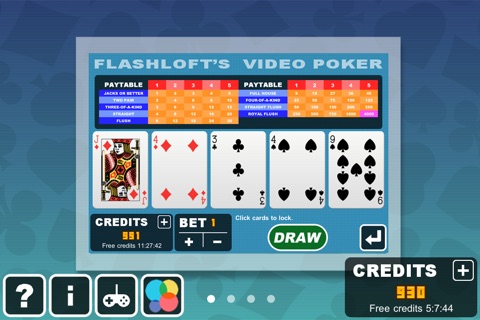
Flashloft's Video Poker app for iPhone and iPad
Video poker first became commercially viable when it became economical to combine a television-like monitor with a solid state central processing unit. The earliest models appeared at the same time as the first personal computers were produced, in the mid-1970s, although they were primitive by todays standards.
Video poker became more firmly established when SIRCOMA, which stood for Si Redds Coin Machines, and which evolved over time to become International Game Technology, introduced Draw Poker in 1979. Throughout the 1980s, video poker became increasingly popular in casinos, as people found the devices less intimidating than playing table games. Today video poker enjoys a prominent place on the gaming floors of many casinos. The game is especially popular with Las Vegas locals, who tend to patronize locals casinos off the Las Vegas Strip. These local casinos often offer lower denomination machines or better odds, although this was more common in the 1990s as casinos across the country have recently been cutting their paytables and/or only offering 25 cent machines or higher.
After inserting money (or a barcoded paper ticket with credit) into the machine, play begins by placing a bet of one or more credits and pressing the "deal" button. The player is then given cards and has the opportunity to discard one or more of them in exchange for new ones drawn from the same virtual deck. After the draw, the machine pays out if the hand or hands played match one of the winning combinations, which are posted in the pay table.
Pay tables allocate the payouts for hands and are based on how rare they are, the game variation, and the decision of the game operator. A typical pay table starts with a minimum hand of a pair of jacks, which pays even money. All the other hand combinations in video poker are the same as in table poker, including such hands as two pair, three of a kind, straight (a sequence of 5 cards of different suits), flush (any 5 cards of the same suit), full house (a pair and a three of a kind), four of a kind (four cards of the same value), straight flush (5 consecutive cards of the same suit) and royal flush (a Ten, a Jack, a Queen, a King and an Ace of the same suit).



